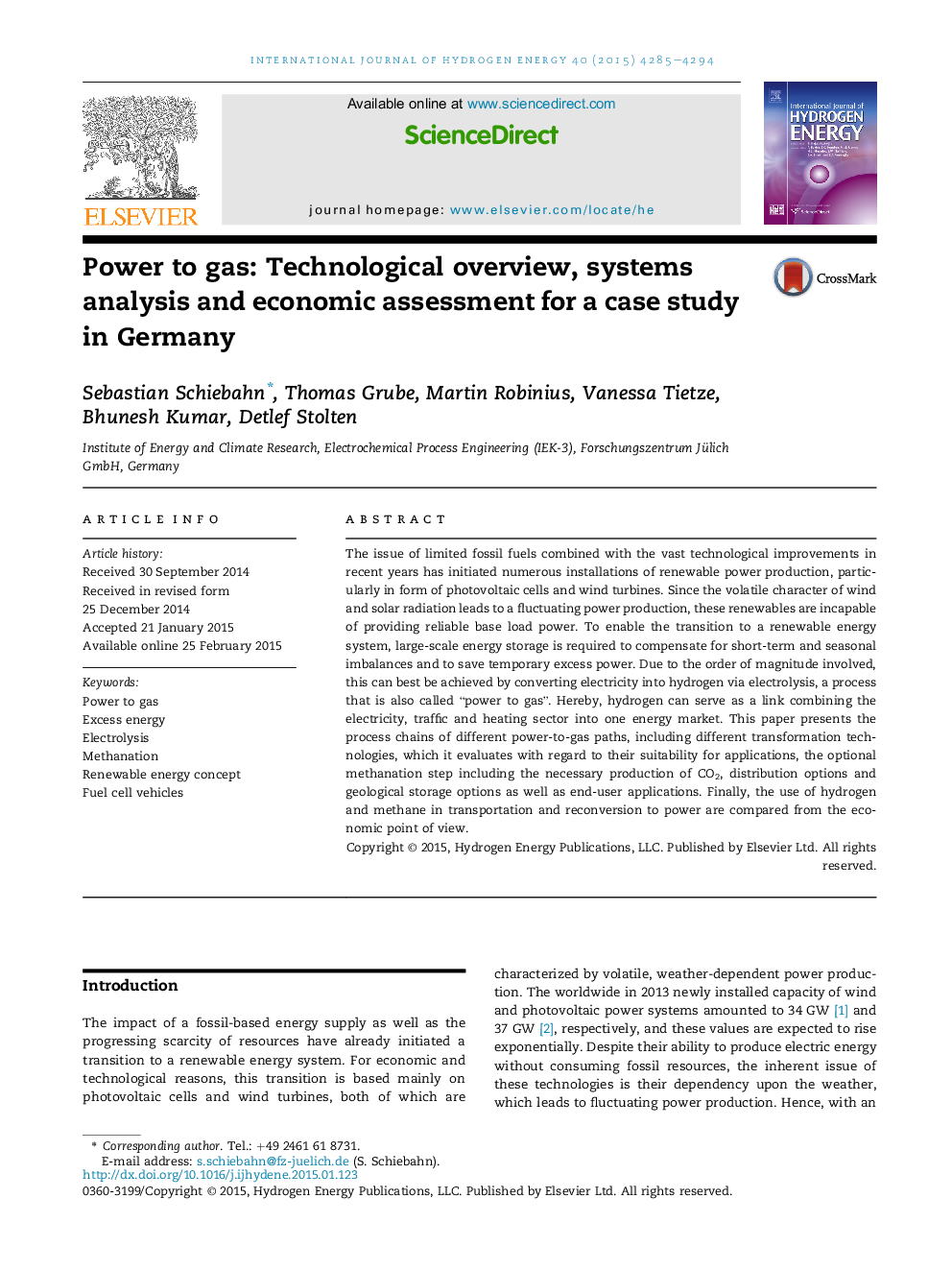| Article ID | Journal | Published Year | Pages | File Type |
|---|---|---|---|---|
| 1271753 | International Journal of Hydrogen Energy | 2015 | 10 Pages |
•Power-to-gas is a feasible option for storing TWh of energy for long term.•Cost reduction of electrolysis is essential to make power-to-gas attractive.•Feed-in of renewable hydrogen or methane into the NG grid is uneconomic.•Utilization of renewable hydrogen for fuel cell vehicles will become profitable.•Implementing a dedicated hydrogen infrastructure is difficult but reasonable.
The issue of limited fossil fuels combined with the vast technological improvements in recent years has initiated numerous installations of renewable power production, particularly in form of photovoltaic cells and wind turbines. Since the volatile character of wind and solar radiation leads to a fluctuating power production, these renewables are incapable of providing reliable base load power. To enable the transition to a renewable energy system, large-scale energy storage is required to compensate for short-term and seasonal imbalances and to save temporary excess power. Due to the order of magnitude involved, this can best be achieved by converting electricity into hydrogen via electrolysis, a process that is also called “power to gas”. Hereby, hydrogen can serve as a link combining the electricity, traffic and heating sector into one energy market. This paper presents the process chains of different power-to-gas paths, including different transformation technologies, which it evaluates with regard to their suitability for applications, the optional methanation step including the necessary production of CO2, distribution options and geological storage options as well as end-user applications. Finally, the use of hydrogen and methane in transportation and reconversion to power are compared from the economic point of view.
